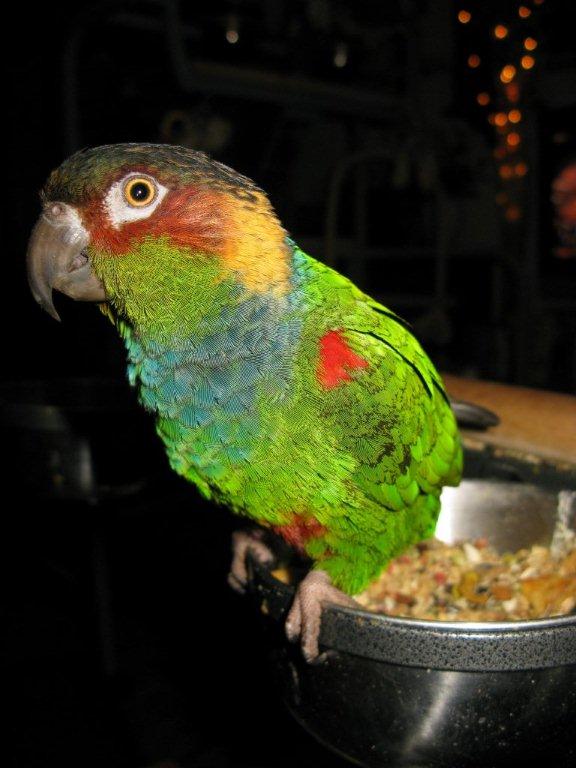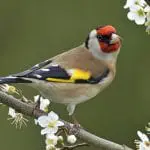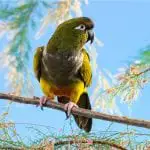Scientific Facts
| Common Name: | Blue-throated conure |
| Scientific Name: | Pyrrhura cruentata |
| Life Span: | 15 to 25 years |
| Size: | 11.7 inches |
| Habitat: | Rainforests and forest edges |
| Country of Origin: | Brazil |
Physical Description
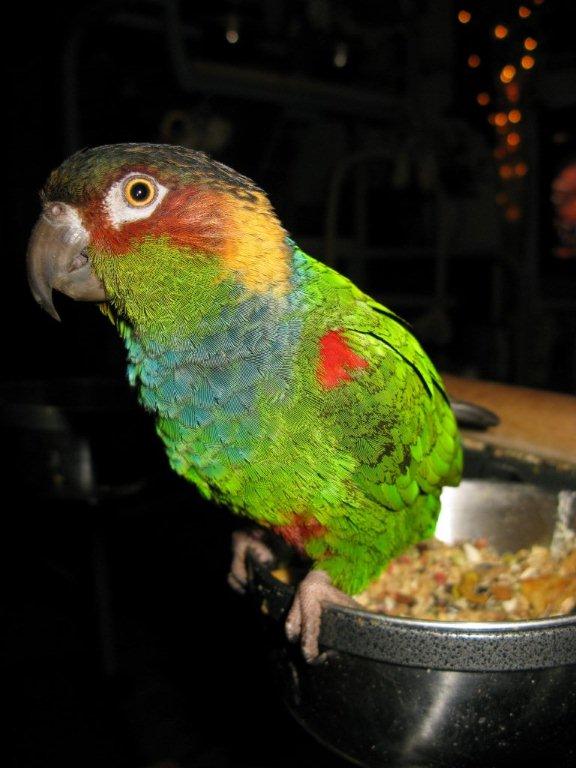
This bird is a unique-looking conure. It is one of the most colorful birds on Earth that makes it highly interesting. The blue-throated conure is affectionate and sociable, just like other conures. Though this bird is less common in aviculture, it comes with various traits that made it a desirable pet.
It sits apart from its close cousins with its personality and exotic looks. So, if you want a playful and cuddly pet parrot that comes with a pleasing personality, then the blue-throated conure might be the right one for you.
This little parrot shares different traits with most conures. On average, this bird grows up to 30 centimeters or 12 inches long. Its long tail adds a lot to the bird’s overall size. The blue-throated conure also has iconic features such as the sharp and curved beak, slightly tangled feathers, sleek head form, and a compact body.
Moreover, this tiny parrot tends to be so energetic that it will love to play with humans. While the bird is small, it still requires a big cage and more exercise and playtime.
Speech or Sounds
If you live with your family in an apartment, taking care of a bigger, exotic parrot will not be a good idea. Why not consider taking a blue-throated conure instead? This bird is less likely to be noisy as it tends to be happy with just a simple natural call and some few words of mimicking. The chirps, tweets, and occasional screech are toned down and not so annoying. This bird, therefore, is a good choice of pet if there are houses near yours.
Colors
Not all conures have exotic colorations or are lack of variety in terms of details. The blue-throated conure has a beautiful, unique plumage. Its body is in the rich green shade while the top of its head is black. Its cheeks are in burgundy red that turns into light peach on the back of the bird’s neck.
The neck is light green. Another distinct detail is the wide chest band of turquoise shade. Its tail and belly look prominent with a dark crimson red. The bird’s entire look has been finished off and tied all with orange spots on top of its wings. Indeed, the blue-throated conure is so beautiful.
Behavior and Personality
This conure is not too noisy but with a silly and playful personality. The bird is also affectionate, cuddly, and very sociable. The blue-throated conure can easily become a lovable pet, and everyone’s “apple of the eye.”
With a great personality and unlimited energy, you will find this bird an entertaining buddy on each day of your life. The bird can easily create a strong relationship with its owner, mainly due to its playful and loving nature.
Life Span
The blue-throated conure can live for up 25 years or even longer. This fantastic feathery pet is going to be your best buddy for as long as you keep it healthy and happy.
Range and Natural Habitat
Compared to those parrots from South America, the blue-throated conure exists only in Brazil. Its population has been divided into fragments across the country, so this species has been classified vulnerable.
This bird loves to nest in the humid forests within the lowlands. Occasionally, it nests high in tree canopies. The main reason behind its vulnerability is the statewide neglect combined with the prolific devastation of the forests and the bird’s natural habitat.
Moreover, the blue-throated conure is typically forced to eat plantations and cause damage to crops. It makes this species rare both in captivity and in the forest.
Feeding
The regular commercial seeds or pellet-based mixes designed for conures will be your best options for having a perfect diet. Your pet will also require additional vitamins, so you should also introduce veggies and fruits to your pet. Remember, a healthy, balanced diet will save your pet from various health problems.
Common Health Issues Among the Blue-throated Conure
This tiny parrot can easily adjust to typical household circumstances for as long as everything stays in the correct order. Bathing is one of the things that make a blue-throated conure happy. Therefore, your pet must have regular baths on the sink of the bathroom or in a big bathing dish. This will simulate the humid condition of the bird’s natural habitat. Also, it will help in preventing feather-related diseases.
Nesting and Breeding
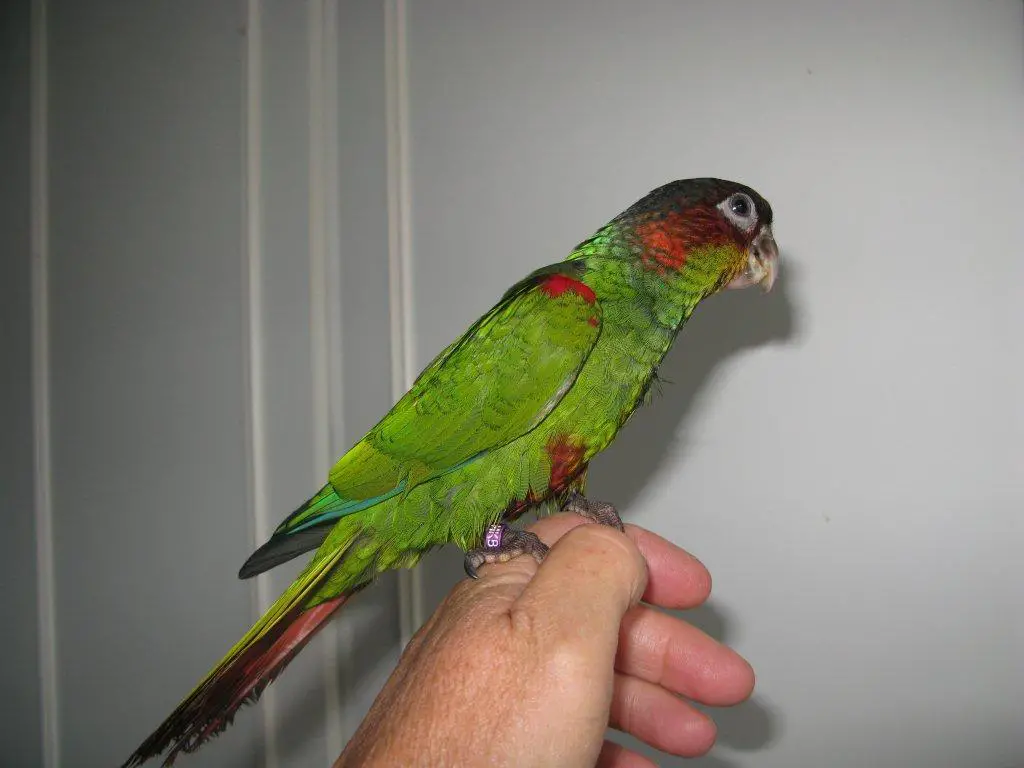
The blue-throated conure is fond of making a nest in tree cavities. The females lay 2 to 4 eggs in each clutch. Once the eggs were laid, the males will help the females in incubating the eggs. The incubation period for those eggs will last for around 25 days. The hatchlings will fledge after 10 weeks.
Housing
The blue-throated conure is a strong flyer, so you need to keep your pet in a big, spacious aviary. It should measure 4 meters long, 1.2 meters wide, and 1.2 meters high. A conventional aviary that measures 1.5-2 meters long, 2 meters tall, and 1-meter wide will also be good. The banks of the aviary must have a walkway that will prevent the bird from flying away if it managed to get out of the aviary.
If you keep a blue-throated conure side by side or beside other birds, then the aviary should have double wires or a partition in the center. As this bird can be so sociable, putting a blockage that will separate them from other birds will help a lot. It will let your conure see its neighbors without losing its freedom and privacy.
The aviary’s roof back half must have a colorbond sheet while the front half should have a good type of wiring. It will let the bird bask and enjoy the pouring rain on the front or return to the backside during harsh weather conditions.
The aviary must be made of either steel or aluminum. Don’t use wood because the blue-throated conure is a famous wood lover and will damage a wooden aviary.
You can also go for an aviary that has a cement rat block that sinks to the ground at around 600mm deep with spare 200mm above the ground attached to the colorbond sheet. The colorbond sheet measures 1.2 meters tall and will prevent the snakes and rats from getting into the aviary. You can use a 1.6-gauge wire measuring 12.5 mm x 12.5 mm. This type of wire is suitable for housing Amazon birds, conures, Hahn’s Macaws, and many more.
The aviary’s banks can also have an automated water and sprinkler system. The sprinkler system should be turned on if required and gives the bird a mild mist to take a bath. The automated watering system, on the other hand, must work twice each day. It runs together with a computer. Nonetheless, the water will be checked twice every day.
If you want to keep your blue-throated conure as a pet, you should buy a spacious and sturdy cage from the local pet store. A cage is longer, which will let the bird fly more. Though it is not good at chewing, this conure chews wood, so a wooden cage isn’t advisable nor a plastic enclosure. A round cage is not suggested for birds that do not feel in ease in a round cage.
A good enclosure must not be flimsy and must be made of high-quality materials. It has a great latch designed for locking the enclosure. It should easy to clean and with right bar spacing so that the bird can’t stick the head out of the enclosure.
A high-quality cage must have a detachable grid and tray in the cage’s base. The tray should collect the droppings of your pet, including the fallen foods. On the other hand, the grid will keep your pet unable to access the fouled foods, including their droppings. A cage must be cleaned every 2 weeks, while the perches must be changed regularly.
The toys, branches, and perches are all crucial for the cage. The perches must be crafted by using non-toxic branches like those coming from bottlebrush, eucalyptus, grevillea, and acacia. Perches made of these materials are best to use for birds, especially for the blue-throated conure.
It’s important to wash the branches and perches. Let them dry first before putting them inside the cage. When choosing branches that will be used as perches or toys, go for those pieces from those areas free from the harmful chemical sprays. The renewal of fouled or chewed perches must be undertaken as often as possible.
Also, keep in mind that the blue-throated conure loves to play. Due to that, sturdy toys must be given to your pet. You can buy these toys from the pet shops, bird clubs, and suppliers of toys made for birds.
Before you buy any toy for your bird, it is best to talk to the person who is selling the item to be sure that it is 100% safe for the animal. Incidences in which inferior quality toys maimed or killed the birds were reported. These toys continuously do damage as a result of poor advice.
Bathing
The blue-throated conure loves to bathe even on the coldest of mornings, so a big shallow bowl full of water might be placed in the aviary or cage. Be extra careful; however, if you’re doing it that you need to place the cage somewhere, it will be surrounded with things that aren’t of good value like paperwork because this bird will flick the water everywhere. The branches of the non-toxic tree or plant might be offered to the animal when wet as it loves to crawl on wet foliage.
Where to Get One?
The blue-throated conure is widely available in the local and online pet stores today. You may also try searching for this type of bird at the breeders in your area.
How to Care for a Blue-throated Conure?
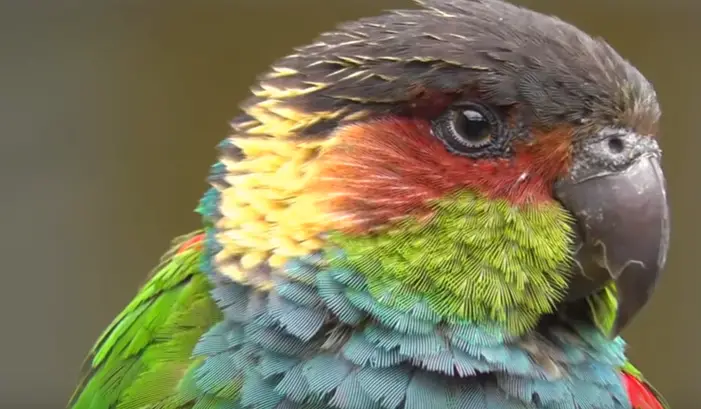
The blue-throated conure is a very intelligent bird. Words are not enough to define how smart this little bird is. It loves playing and being touched by its owners. The bird is eager to learn some tricks, including how to talk.
Although it has a cute high-pitched voice, it’s incredible how quick this bird can learn how to pronounce simple words and speak. It enjoys performing its newly learned tricks in front of its owner. The bird will be so happy if you praise it once it was able to perform the trick successfully and correctly. Spending around 15 minutes each day with a blue-throated conure is enough to teach it some words or tricks. These things will make the bird happy and cheerful.
Talking Ability
The blue-throated conure can talk just some loud whispers. It can easily mimic the voice of a woman because its pitch is higher than the pitch of a man’s voice.
Feather Plucking
The blue-throated conure is not usually susceptible to feather plucking. On the other hand, a well-balanced diet combined with adequate attention and stimulation will help you ensure your feathery friend is not getting bored.
FAQs
Can a blue-throated conure talk?
A blue-throated conure has the potential to become a good speaker. It can easily mimic the voice of a lady compared to the voice of a man.
Does the blue-throated conure love being held?
A blue-throated conure is a very sociable animal. It loves to be with humans, so your pet will be very happy each time your hands are rubbing its feathers.
What kind of personality does the blue-throated conure have?
The blue-throated conure is a nice and very sociable creature. It comes with a silly and playful personality that you will truly enjoy.
What is the usual lifespan of a blue-throated conure?
On average, a blue-throated conure can live for 25 years, but it can live for more than that. Its life span depends a lot on how you take care of the bird.

